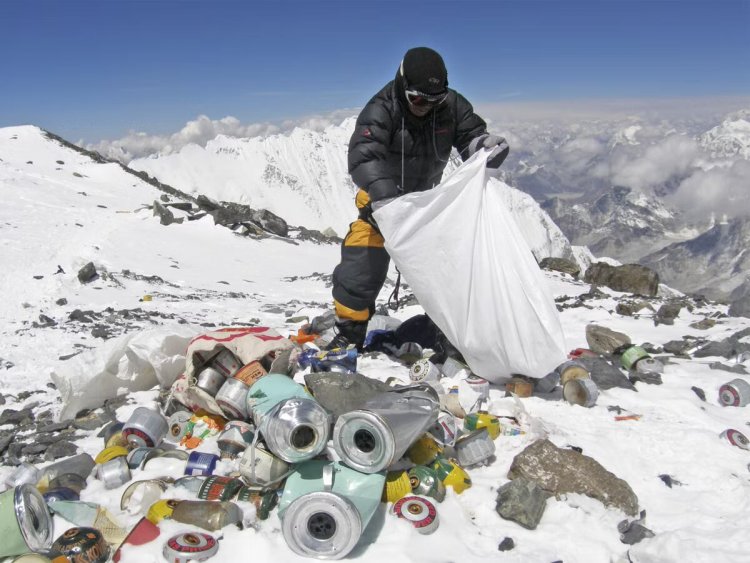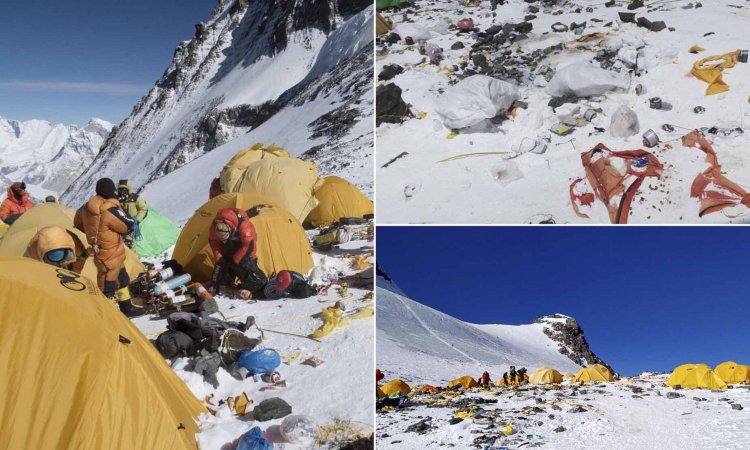The World's Biggest Garbage Dump: Mount Everest
Mount Everest: From Dream Summit to Environmental Nightmare. Cleanup Initiatives Offer Hope.

Introduction
Mount Everest, the iconic peak that has captured the imagination of climbers worldwide, has unfortunately become a symbol of environmental degradation. Over the years, the combination of commercial mountaineering and neglect has turned Everest into the world's largest garbage dump. This article explores how this came to be and highlights some of the efforts being made to address the issue.
Mount Everest as a Symbol of Conquest: Since the historic ascent of Mount Everest in 1953 by Edmund Hillary and Tenzing Norgay, countless climbers have embarked on the arduous journey to conquer the world's highest peak. However, the pursuit of this dream has come at a cost.
The Transformation into a Garbage Dump:

Decades of commercial mountaineering and the increasing number of climbers attempting to reach the summit have led to the accumulation of garbage on Everest. Discarded tents, plastic waste, food cans, batteries, empty oxygen cylinders, and human waste litter the mountain and its trekking routes. The scale of the trash problem has reached alarming levels, with even the glaciers melting and revealing long-frozen garbage.
Health Hazards and Environmental Impact:
The presence of such massive amounts of waste poses severe health hazards to both climbers and local communities. The melting ice carries pollutants into the water sources, affecting the health of those dependent on it. Furthermore, the lack of proper waste management on Everest has turned it into a grim graveyard, with the remains of climbers who have perished on the mountain left behind due to the difficulty of retrieval.
Causes of the Garbage Problem:
The garbage issue on Everest can be attributed to the ignorance and negligence of various stakeholders, including the government, climbers, and the commercial expedition companies. The lack of awareness and apathy towards preserving the environment has contributed to the degradation of this natural wonder.
Cleaning-Up Efforts
Despite the huge waste issue, cleanup efforts are still being made. The Mount Everest Biogas project, which aims to clean up the Gorak Shep village close to Everest, is one noteworthy endeavor. In order to provide a more long-lasting end environmentally responsible alternative, this project will divert human waste to an anaerobic digestion system.
Another company, Sagarmatha Next, uses rubbish collected from Sagarmatha National Park to produce art as part of its waste management and community development initiatives. They intend to advance these efforts by opening a center close Namche Bazaar.
Although these efforts have promise, much work remains. The Everest Base Camp needs to continue to be cleaned up, and developing efficient recycling options is essential to reduce the rubbish issue. Increased knowledge among climbers and stricter rules can also aid in preserving Mount Everest's natural beauty.
Conclusion
Mount Everest's status as the world's highest peak has been overshadowed by its transformation into a massive garbage dump. However, efforts are being made to address the issue, focusing on waste management and community involvement. It is essential for all stakeholders to come together and take responsibility for preserving the iconic landmark for future generations.
What's Your Reaction?




































































































